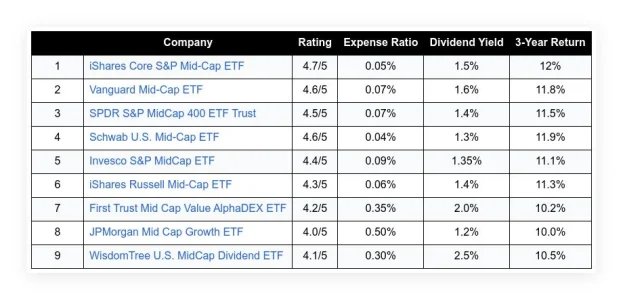One of the most important financial goals you will ever have is saving for retirement. Despite this, many people struggle to save enough money for retirement due to rising living costs, unexpected expenses, and a lack of clear financial planning. As a result, you might find yourself falling behind.
Even if your retirement savings aren’t enough, don’t beat yourself up about it. According to Bankrate’s latest Retirement Savings Survey, 57 percent of Americans are behind on their retirement savings. In addition, 48 percent of workers with a specific retirement goal do not believe they’ll be able to save that much if they have a specific goal in mind.
Even so, planning for retirement can seem overwhelming — especially when everyone’s advice boils down to saving more money and cutting expenses. While these are practical tips, they may not be suitable for everyone. As such, if you’re having trouble finding extra cash for retirement but want to save more, consider some unique strategies that go beyond traditional financial planning.
Here are 15 lesser-known but highly effective ways to boost your retirement savings.
Table of Contents
Toggle1. Beyond the 401(k): Seek Diverse Paths to Retirement Savings
Your 401(k) should be just one part of your retirement plan. You can also build a comfortable financial future with other strategies. Here are some popular options:
- IRAs. Contributions to traditional IRAs are tax-deductible, while withdrawals from Roth IRAs are tax-free. Banks, credit unions, and brokerage firms typically offer both services.
- Cash savings. Savings accounts, CDs, and money market accounts provide convenience and safety for short-term goals and emergency funds.
- Annuities. Annuities, which guarantee income in the future, can bring stability, but they also have high fees. In EY’s analysis, people who properly allocate their wealth across investments, permanent life insurance, and deferred income annuities are more likely to achieve long-term success than those who only invest.
- Securities. Mutual funds, ETFs, stocks, and bonds offer flexibility and potential for growth but do not provide tax benefits.
- Real estate. In addition to providing income and appreciation, rental properties, REITs, and crowdfunding can also provide tax benefits.
Depending on your individual circumstances, risk tolerance, and financial objectives, the best approach will differ. To create a personalized retirement plan, consult a financial advisor.
2. House Hacking: Turn Your Home Into an Income Stream
A house hack can be a game-changer if you own a home.
If you’re unfamiliar with house hacking, it’s a real estate strategy that involves renting part of your home to generate income while living there. You can do this in several ways, including:
- Investing in multifamily properties. Living in one unit while renting out the others so that your tenants pay most of your mortgage.
- Renting out a room in your house. Potentially, you can make a profit while offsetting your mortgage payments.
- Adding additional bedrooms to your home. With an extra living space, you can increase the value of your home and earn an income.
Generally, short-term rentals can be quickly started using platforms like Airbnb, while long-term rentals can be more stable. In addition, house hacking helps you build equity in your home while keeping your living expenses low. As a result, your retirement savings can get a significant boost over time, thanks to the extra income.
3. Monetize Your Hobbies
Is there a hobby or passion that you’re good at? Your hobbies, whether photography, knitting, woodworking, or gaming, can help you bolster your retirement savings. You can generate extra income directly into your retirement fund by selling handmade items on Etsy or offering freelance services.
Ideally, you should consider starting a small side business or creating a digital course to generate passive income. In this way, you can use something you enjoy to generate a steady income without feeling like you have to do anything.
4. Participate in the Sharing Economy
As the sharing economy has grown in recent years, people have been able to monetize their assets. For example, if you live in a high-demand area, you can rent out your parking space on services such as Turo. You can also drive to Uber or Lyft if you have spare time.
Ultimately, each option can provide extra income with minimal effort, allowing you to save more for retirement.
5. Automate Your Savings with Apps and Micro-Investing
One of the most challenging obstacles to saving more is remembering to save more. However, putting your savings on autopilot can make a huge difference. Acorns or Qapital offer financial apps for rounding up daily purchases and investing the difference. With micro-investing apps, you can invest small amounts regularly, which can add up significantly over time.
You can also use apps like Nerdwallet, which generates a report based on your current age, planned retirement age, income, savings, and saving interest rate. This app also provides easy suggestions for catching up. For long-term savings, there are robo-advisors like Betterment.
6. Cashback and Rewards Programs
It’s common for people to use credit cards for convenience, but few think about how these cards can help them save for retirement. With cashback credit cards and rewards programs, you can earn back a percentage of your grocery, gas, and dining purchases.
By using a 2% cashback credit card on $1,000 a month, for example, you could earn $240 per year. Despite its small size, this amount can contribute significantly to your retirement savings if you save it every year for several decades. In addition, some programs offer direct transfers to retirement accounts.
7. Get a Company Match for Both Student Loans and Retirement
Despite the importance of repaying student loans, many recent graduates neglect their retirement plans, overlooking valuable company match benefits and the potential for long-term investment gains. However, thanks to the SECURE 2.0 Act, a 401(k) student loan match exists.
In other words, employers can now provide qualified employees a unique benefit: matching their student loan payments with contributions to a retirement account. Retirement plans such as 401(k), 403(b), and government 457(b) fall under this category.
For example, if an employee pays $800 in student loans monthly and 3% of their salary goes into their retirement plan, the employer may match both amounts. In addition to annual limits, the matching amount must follow the company’s matching formula, which must be consistent for both student loan payments and retirement contributions.
This new benefit allows employees to accelerate their retirement savings while simultaneously reducing their student loan debt.
8. Take Advantage of Lifestyle Arbitrage
By utilizing the cost-of-living differences between different locations, lifestyle arbitrage can help you save money. If you can work from home or are considering a significant lifestyle change, moving to a lower-cost area could allow you to save more for retirement. In some countries, the cost of living is a fraction of what it is in the US, which is why retirees move abroad.
Those who are not yet retired should consider taking on a short-term remote job or seasonal position in a lower-cost location. By saving on rent, utilities, and food, you can put more toward your retirement without drastically changing your lifestyle.
9. Turn Your Health into Wealth
The cost of healthcare is a major concern for many retirees. And for good reason. According to Fidelity’s 2024 Retiree Health Care Cost Estimate, individuals 65 and older may need $165,000 in after-tax savings to cover health care costs.
The best way to mitigate these expenses is to invest now in your health, such as engaging in physical activity and eating healthy. However, did you know that being healthy can also help you save more for retirement? In addition to reduced insurance premiums, wellness programs can offer employees cash rewards.
Furthermore, a healthy lifestyle can help you preserve more of your retirement savings by reducing future medical expenses. Health Savings Accounts (HSAs) offer triple tax benefits:
- Contributions are deductible
- Growth is tax-free
- Withdrawals are tax-free for qualified medical expenses.
In retirement, HSAs can help you cover healthcare costs while giving your investments more time to grow.
10. Take Advantage of the Retirement Saving Contributions Credit
Known as the “Saver’s Credit,” the Retirement Savings Contributions Credit encourages individuals with low-to-moderate incomes to save for retirement. When you contribute new money to a qualified retirement account, you can receive a tax credit of up to $1,000 ($2,000 if you are married).
The following criteria must be met to qualify for the Saver’s Credit:
- Be at least 18 years old
- Not be a full-time student
- Not be claimed as a dependent on another person’s tax return
- Be below the IRS’s annual maximum threshold for adjusted gross income
You must meet the following requirements to claim the Saver’s Credit on your tax return. As well as reducing your tax liability, this credit can help you save for retirement.
11. Participate in “No-Spend” Challenges
No-spend challenges are precisely what they sound like—committing to refrain from spending money on non-essential items for a given period, such as a month. Doing this lets you reset your spending habits and identify areas where you’re overspending.
Instead of dining out, buying clothes, or enjoying entertainment, you could save for retirement. When you take on these challenges, you’ll likely be surprised at how much you can save. You’ll see your retirement savings grow faster if you do a no-spend challenge, such as the bi-weekly money-saving challenge.
12. Don’t Spend Tax Refund Windfalls
Instead of using your tax refund for a vacation or a new gadget, deposit it directly into your retirement savings. In the long run, consistently saving this chunk of money every year can add up to a significant amount of money.
By saving every refund, or at least a portion of it, you’ll give yourself an annual boost to your retirement fund.
13. Don’t Miss Out on Catch-up Savings
You probably know there is a limit to how much you can contribute to tax-advantaged retirement accounts like IRAs and 401(ks). As soon as you reach age 50, you can make additional “catch-up” contributions over and above those annual limits.
Nevertheless, just about 16% of eligible employees took advantage of catch-up contributions in 2022.
In 2024, the catch-up contribution is an additional $7,500 on top of the $23,000 limit for everyone else, for a total of $30,500. In 2026, however, savers over 50 will be divided into two groups based on their annual income:
- In addition, those making less than $145,000 can continue contributing to their 401(k)s before taxes.
- Those who earn $145,000 or more will have to contribute their catch-up dollars to a Roth 401(k)-which means those contributions will be after-tax, though withdrawals in retirement will be tax-free.
14. Upskill Yourself to Boost Your Earning Potential
When it comes to saving, sometimes earning more is the best strategy. In addition to increasing your income potential, investing in your education and skills can help you save more for retirement. It may be possible for you to qualify for higher-paying jobs if you take online courses, get certifications, or even learn a new language.
With platforms like Coursera, Udemy, and LinkedIn Learning, you can enhance your resume and career prospects for a relatively low cost. If you increase your salary and commit to saving the difference, you can significantly improve your long-term savings.
15. Delay Social Security If You’re Close to Retirement
“This is a big one,” says Christopher Vale, senior vice president of digital Advice and Investment Solutions at Bank of America. “For every year you can delay receiving a Social Security payment before you reach age 70, you can increase the amount you receive in the future.” Social Security retirement benefits can be received as early as 62, but they will be reduced if you take them before the full retirement age — 67 for those born in 1960 or later.
Each year you wait (until 70), your monthly benefit increases and the additional income builds quickly. It can also increase your spouse’s potential future survivor benefits if you delay retirement even one year.
“Recognizing the need to put money away for retirement is the first step,” adds Vale. You should know how much you plan to invest in retirement and find creative ways to increase your contributions. Among retirees, starting too late and saving too little are common regrets. Putting in the effort now can make retirement more enjoyable.
FAQs
How can I maximize my retirement savings?
The following tips may be helpful:
- Start early. As a result of compound interest, your money grows more quickly since interest is calculated on both the accumulated interest and your original principal. When investments grow together with income earned from them, compounding can create a snowball effect.
- Contribute regularly. It doesn’t matter how small the amounts are; they all add up over time.
- Consider employer matching. Don’t miss out on free money if it is offered.
- Diversify your investments. You can mitigate any risk by spreading your money among different asset classes.
- Review your portfolio regularly. If necessary, adjust your goals accordingly.
What are some common mistakes to avoid when saving for retirement?
The following pitfalls should be avoided:
- Waiting too long. In general, the earlier you begin, the better.
- Not contributing enough. Your contribution should be as large as you can afford.
- Withdrawing early. When you wait until retirement, you will avoid penalties and taxes.
- Ignoring fees. If you pay high fees, your returns may be eroded.
- Not understanding your investments. Don’t invest in anything you don’t understand.
Are there any tax advantages to saving for retirement?
Yes, many retirement accounts offer tax benefits. When you retire, Roth accounts provide tax-free withdrawals instead of traditional IRAs and 401(k)s.
How can I determine how much I need to save for retirement?
Using retirement calculators or consulting with a financial advisor will help you estimate your future needs based on your desired lifestyle, anticipated expenses, and investment return.
Image Credit: KATRIN BOLOVTSOVA; Pexels















